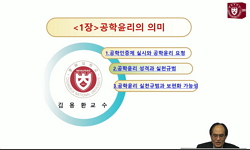본 논문은 근세초기 구어자료에 나타나는 「べし」의 사용양상을 살펴보기 위해 『昨日は今日の物語』와 『醒睡笑』를 대상으로, 활용형과 의미용법에 대해 고찰한 것이다. 고찰결과 다음...
http://chineseinput.net/에서 pinyin(병음)방식으로 중국어를 변환할 수 있습니다.
변환된 중국어를 복사하여 사용하시면 됩니다.
- 中文 을 입력하시려면 zhongwen을 입력하시고 space를누르시면됩니다.
- 北京 을 입력하시려면 beijing을 입력하시고 space를 누르시면 됩니다.

근세초기 구어자료에 나타나는 「べし」의 사용양상 - 『昨日は今日の物語』와 『醒睡笑』를 중심으로 - = The Use of ‘Beshi’ in Spoken Language Materials in the Early Modern Era : Focusing on Kinouwa kyounomonogatari and Seisuisyo
한글로보기https://www.riss.kr/link?id=A107941180
- 저자
- 발행기관
- 학술지명
- 권호사항
-
발행연도
2021
-
작성언어
-
-
주제어
근세초기 ; 기노와교노모노가타리 ; 세이스이쇼 ; 활용형 ; 의미용법 ; In the early modern era ; Kinouwa kyounomonogatari ; Seisuisyo ; Utilization type ; Meaning
-
등재정보
KCI등재
-
자료형태
학술저널
-
수록면
173-188(16쪽)
- 제공처
-
0
상세조회 -
0
다운로드
부가정보
국문 초록 (Abstract)
본 논문은 근세초기 구어자료에 나타나는 「べし」의 사용양상을 살펴보기 위해 『昨日は今日の物語』와 『醒睡笑』를 대상으로, 활용형과 의미용법에 대해 고찰한 것이다. 고찰결과 다음의 사항을 알 수 있었다.
첫째, 활용형은 회화문과 지문에서의 차이는 크지 않았으나 「べし」는 둘 다 회화문에서의 사용빈도가 조금 높았다. 두 자료에 나타나는 활용형의 분포를 종합해보면 전체적으로 「べし」가, 「べき」보다 사용률이 약간 높게 나타났는데, 이것은 중세후기의 경향이 반영된 것이라 할 수 있다. 아울러 중세부터 나타난 연용형과 이연형의 감소경향도 확인되었다.
둘째, 종지형이 사용되어야 할 곳에 연체형이 사용된 예가 소수 발견되었는데 이것은 중세후기부터 나타나기 시작한 <종지·연체형의 합일화 현상>의 영향을 받은 것으로 판단된다.
셋째, 「べし」의 활용형에 접속하는 품사의 종류로는 동사가 대부분을 차지하였으며, 다른 품사는 소수에 한정되어 사용되는 것을 알 수 있었다.
넷째, 『昨日は今日の物語』에 나타난 「べし」의 의미는 [의지]-[추량]-[당연·필연]-[적당·권유·명령]의 순서로 나타났으며, 『醒睡笑』에서는 [추량] [당연·필연]-[가능]-[적당·권유]-[의지]의 순서로 나타났다. [의지]의 의미를 제외한 [추량]과 [당연·필연]은 같은 사용빈도의 순서를 보이고 있는 점과 두 자료 전체의 사용양상을 살펴본 결과를 통해 [추량]과 [당연·필연]이 주된 의미로 사용되고 있는 것을 알 수 있었다.
다섯째, 「べからず」는 4예 중에서 [금지]가 3예, [불가능]이 1예 나타났다. 현대일본어에서 「べからず」는 주로 [금지]의 의미에 사용되고 있는데 본 연구 결과에서도 이러한 경향이 파악되었다.
다국어 초록 (Multilingual Abstract)
This paper examines the use of ‘Beshi’ in the Kinouwa kyounomonogatari and Seisuisyo in order to examine the meaning and utilization type of “Beshi” in the early modern era. The result of examination is as follows. First, the difference betwee...
This paper examines the use of ‘Beshi’ in the Kinouwa kyounomonogatari and Seisuisyo in order to examine the meaning and utilization type of “Beshi” in the early modern era. The result of examination is as follows.
First, the difference between the conversation type and the text was not significant, but ‘Beshi’ in both Kinouwa kyounomonogatari and Seisuisyo was slightly higher in the conversation type. Taken together, the overall use rate of ‘Beshi’ was slightly higher than that of ‘Beki’, which can be said to reflect the tendency of the late Middle Ages. In addition, the trend of decrease in < renyoukei > and < izennkei > was confirmed from the Middle Ages.
Second, the phenomenon of ‘continuous shape coalescence’ that appeared from the late Middle Ages was confirmed.
Third, it can be seen that verbs accounted for most of the types of word class connected to the utilization of ‘Beshi’, and other word classes were limited to a few.
Fourth, excluding the meaning of [will], [Conjecture] and [Naturalness·Inevitability] show the same order of use, and the results of examining the usage patterns of both data show that [Conjecture] and [Naturalness·Inevitability] are used as the main meanings.
Fifth, among the four cases of ‘Bekarazu’, three were [Prohibition] and one was [impossible].
동일학술지(권/호) 다른 논문
-
日本語教員養成におけるティーチング·ポートフォリオの可能性 ― 省察を促すツールとしての検討 ―
- 한국일어교육학회
- 鴈野恵 ( Karino
- 2021
- KCI등재
-
한일 대중가요에 나타난 감정어휘의 대응관계 연구 - 한일대역 자료를 중심으로 -
- 한국일어교육학회
- 高恩淑 ( Ko Eun-Sook )
- 2021
- KCI등재
-
グループチャットに見られる韓日コードスイッチングの語用論的機能について ― コードスイッチングが起こるところで何が生じているのか ―
- 한국일어교육학회
- 郭銀心 ( Kwak Eun-sim )
- 2021
- KCI등재
-
学習者発表の傾向と改善案 - 日本の大衆文化に関する発表に関して -
- 한국일어교육학회
- 奈呉真理 ( Nago Mari )
- 2021
- KCI등재




 KCI
KCI KISS
KISS






